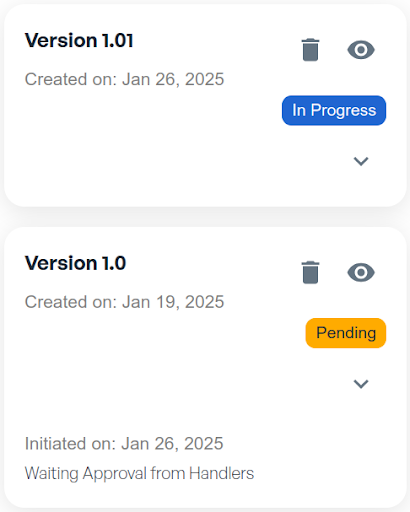12. Framework Versioning & Approval Workflow
When frameworks are updated or modified, maintaining a clear record of changes is essential for tracking progress and maintaining alignment with organisational goals. CSFaaS supports framework versioning by allowing you to manage and approve new versions effectively.
Configure the Framework workflow approval process
Framework workflow approval is not enforced per default but is a recommended process when your organisation becomes more mature.
Howto configuration
To configure the approval workflow: Navigate to the “Workspace Settings” section. Go to the “Workflow” section. Go to the “Approve Frameworks Versions” section.
Configuration options
In this section, you will find three configuration options:
- “Not Enforced” Mode vs. “Enforced” Mode:
- Not Enforced: The default mode, where the same user can validate a framework version.
- Enforced: Requires an approval workflow for framework versions, introducing additional checks for validation.
“Single Validation” vs. “Multiple Validation” Mode
- Single Validation: Only one approver is needed to validate the version.
Multiple Validation Mode
- Multiple Validation requires multiple users to review and approve the version request.
- Approvers are assigned based on roles defined in the workflow settings.
Role Selection
Assign specific users to the approver role to define who will be responsible for authorising the framework version.
Framework Workflow approval How-to
Key Features for Approving Framework Versions:
Version Creation
When you modify a framework, a new version is automatically created to ensure no data is lost, and historical records are maintained. Each version is uniquely identified for easy tracking.
Version Submission for Approval
Once a framework version is ready, submit it for approval via the built-in workflow Approvers are notified and can review the changes made in the new version. Status of the Framework becomes “Pending” while a new version is created as indicated in the below image:

Manage Framework versions
Several options are available to manage versions:
Check the status of any version
“In Progress”: The version currently being worked on. “Pending”: A version awaiting approval. “Approved”: A version that has been approved. “Rejected”: A version that has been rejected.
Revert to a previous version
Navigate back to an earlier version if required.
Delete a previous version
Exercise caution, as this action is irreversible. Ensure that the framework version and its associated data are no longer needed before proceeding.